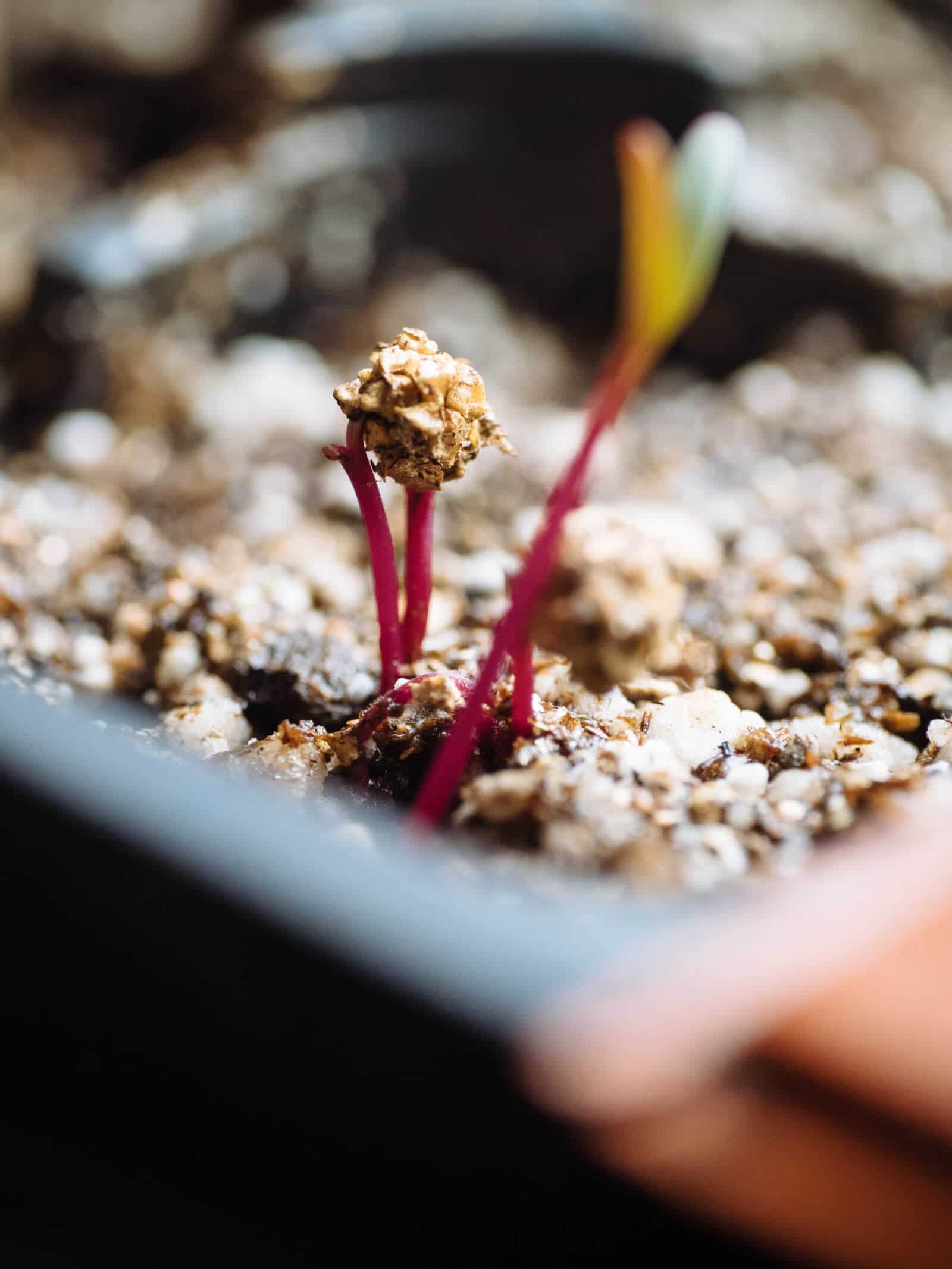Have you ever noticed that, unlike the smooth-textured surfaces of seeds such as spinach, radish, cucumber, and squash, the seeds of beets (and their cousins, Swiss chard) are rough and crinkled, almost like someone just jammed a bunch of seeds together?
That’s because beet and chard seeds are a bunch of seeds jammed into one seed.

Beet and chard seeds are multigerm seeds. (Quick botany lesson: The germ is the reproductive part of a seed — the embryo — that grows into a new plant.)
Multigerm seeds occur when flowers grow in clusters, fused together by the petals (such as the flowers on a beet plant), which then produce multigerm seed balls.
When the seed balls germinate, they may have two to five seedlings sprout all at once.


To encourage better growth and produce sizable beet roots, beet seedlings have to be thinned once they reach a few inches in height. It isn’t an overly daunting task for the average home gardener, especially since thinnings can be used in a salad.
But for a commercial farmer, thinning row upon row of beet seedlings clumped together is not only time-consuming, it’s a huge expense in labor.
It was such a significant problem that in the early 1930s, scientists in the former Soviet Union set to work on developing a type of beet seed that would only produce one seedling — a monogerm seed.
Renowned sugar beet breeder and geneticist Viacheslav F. Savitsky and his colleague, M.G. Bordonos, discovered a mutation in sugar beet plants that caused monogermity in plants that had late-season bolting ability.
They then examined some 22 million (!) sugar beet plants to find 100 plants possessing both multigerm and monogerm seed balls.
The scientists were able to identify plants with a high percentage of monogerm seed balls, as well as the genes that were responsible for the mutation. But unfortunately, their work was interrupted by the Second World War.
Savitsky eventually escaped the Soviet Union and immigrated to the United States in 1947, where he was employed by the USDA and subsequently stationed at the Sugar Beet Laboratory in Salt Lake City, Utah. There, he continued his work in locating possible sources of monogermity for domestic sugar beet growers and the American sugar industry.
In 1948, his intensive research led to the discovery of 5 sugar beet plants bearing monogerm seeds among 300,000 other plants in a 4-acre seed production field north of Salem, Oregon.
Two of those plants (designated as SLC 101 and SLC 107) were true monogerms, and only one ended up being used extensively. The selected offspring of SLC 101 were distributed to plant breeders in the United States and Europe, and within a few years, monogerm varieties of sugar beets were all that were grown in developed countries.
That one plant, SLC 101, served as the sole source of all monogerm beet varieties available today, both for sugar beets and table beets.
While most beets produce multigerm seeds, there are a few varieties that produce only monogerm seeds, such as the F1 hybrid Moneta and the open-pollinated Alvro Mono (both of which are table beets).
If you groan at the very thought of thinning, or tend to have a heavy hand when sowing (I like to call this fat finger syndrome, as it happens quite often in my case!), monogerm seeds could be a good choice for your garden.
As for me, I’m partial to heirlooms like Chioggia and Cylindra and consider thinnings to be an early harvest of my crop!


















I now snip my rejects off at ground level with nail scissors and leave the roots in the ground; result, cleaner salad leaves, the large seedling suffers less disturbance and the roots decay, feeding the survivors. Works for me!